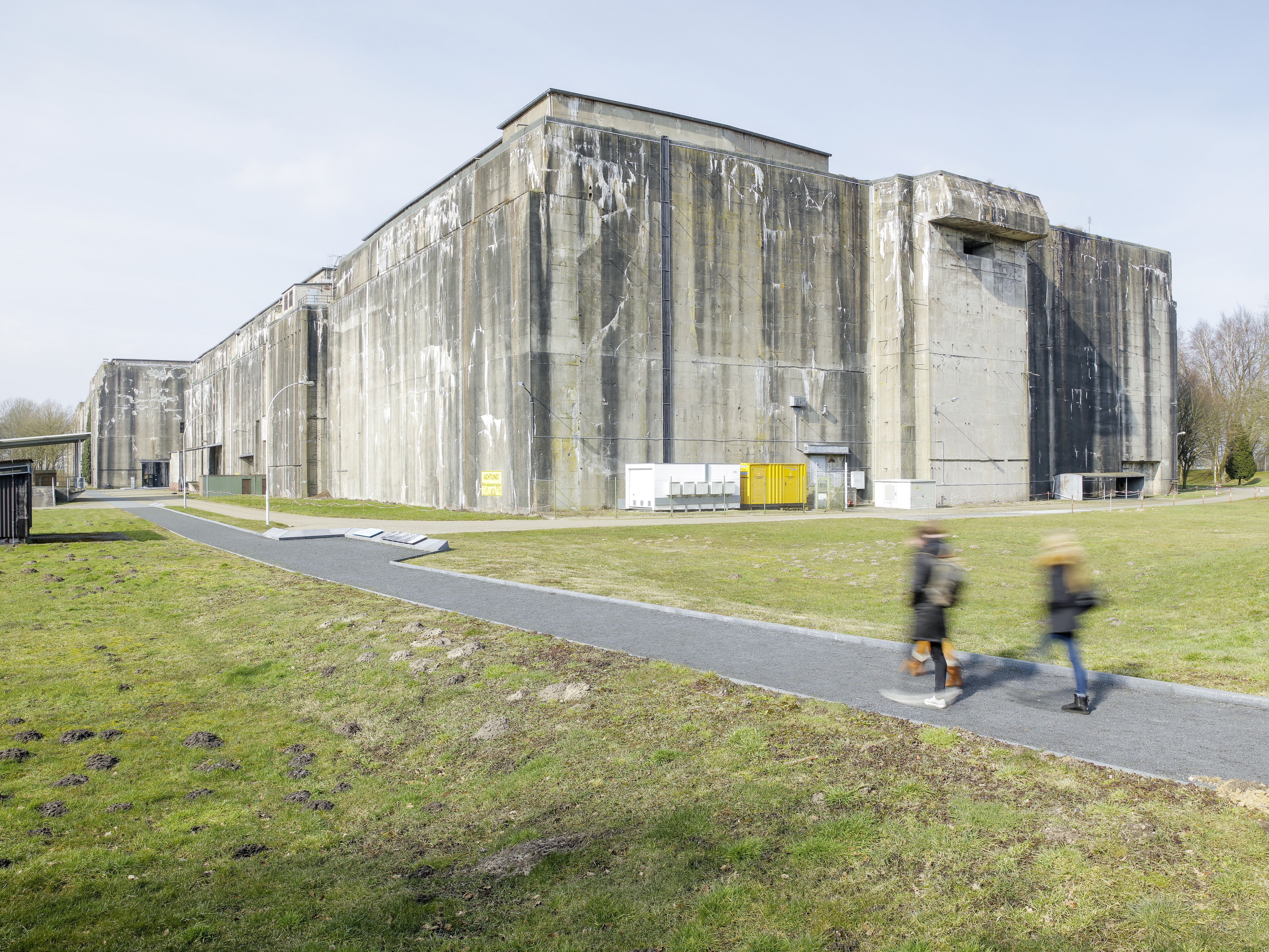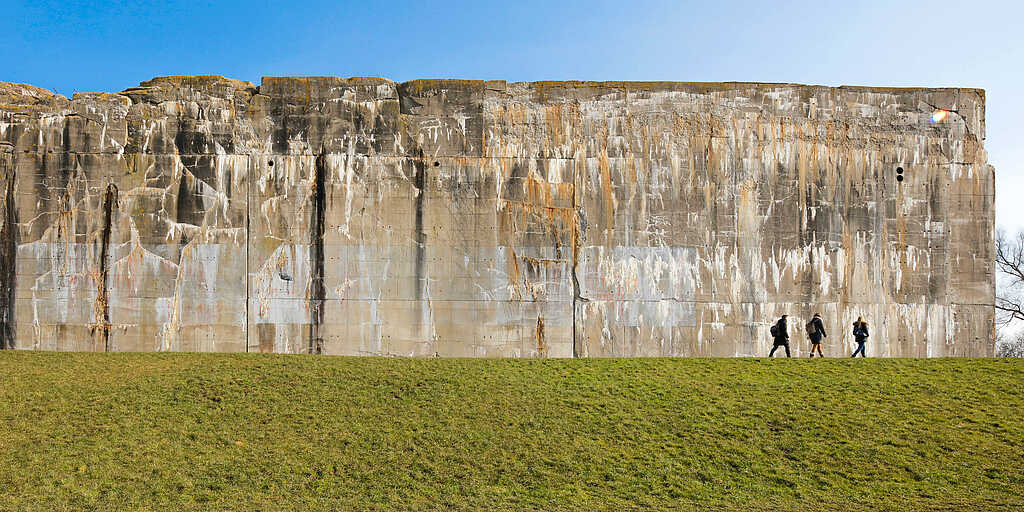

After nearly three years of planning and implementation, the »Valentin« bunker opened as a freely accessible documentation and memorial site at the end of 2015. A circular route with 25 stations guides the visitors around and through the ruins of the submarine shipyards built by slaved labourers.
The »Valentin« bunker, also known as submarine bunker Farge, was built by the Hitler-fascists in the Second World War from 1943 to 1945, using thousands of slaved labourers from all over Europe, of whom about 1,600 died under inhuman conditions. This largest armament project of the Kriegsmarine (German Navy) was bombed shortly before completion and was never put into operation.
The new circular route marks single historical traces of the large-scale construction site and the sufferings of the slaved labourers by means of photographs and reports of contemporary witnesses. A multimedia guide complements the circular route. In the information centre is a media table and an exhibition with in-depth information on the history of the place.
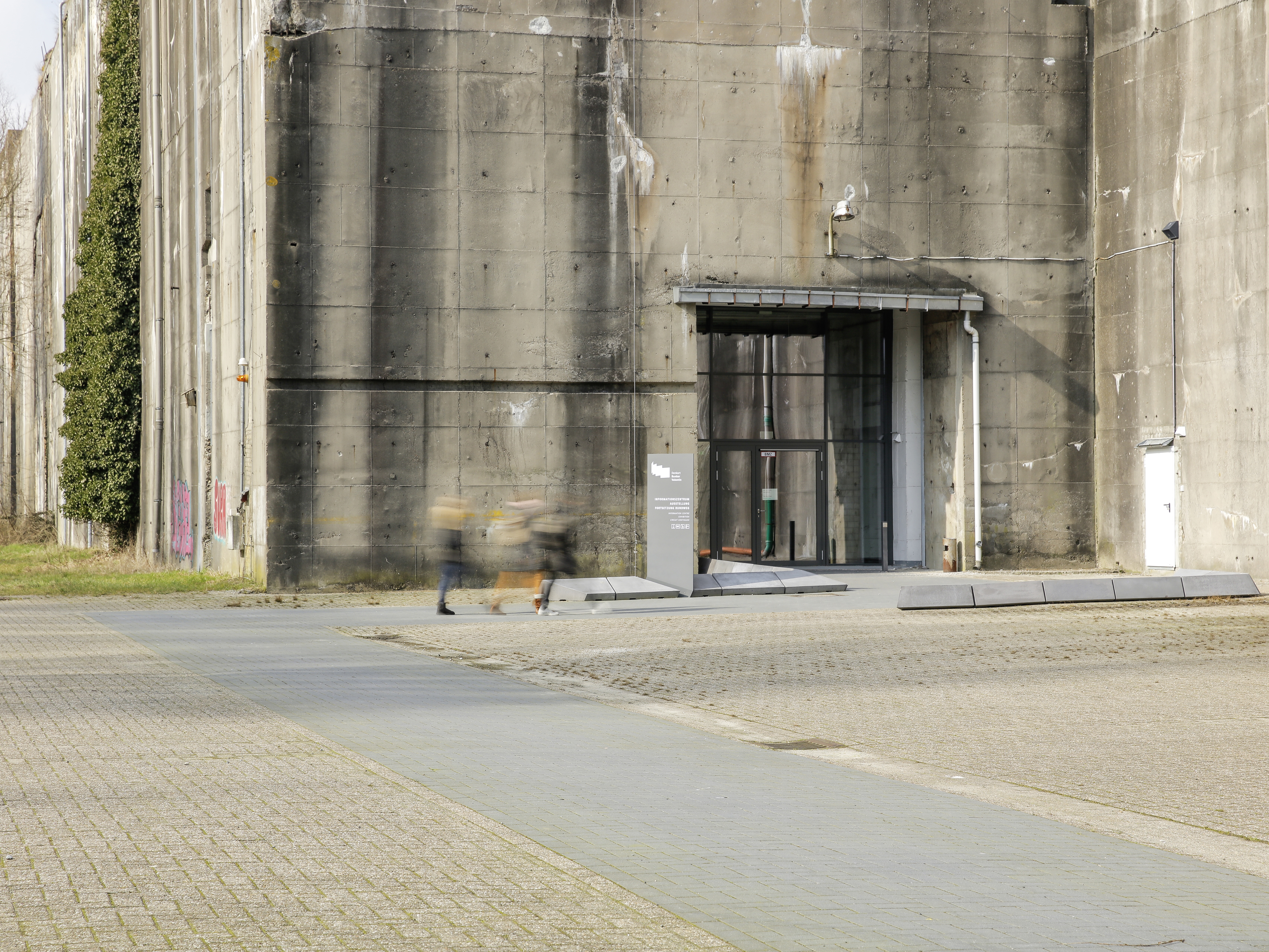
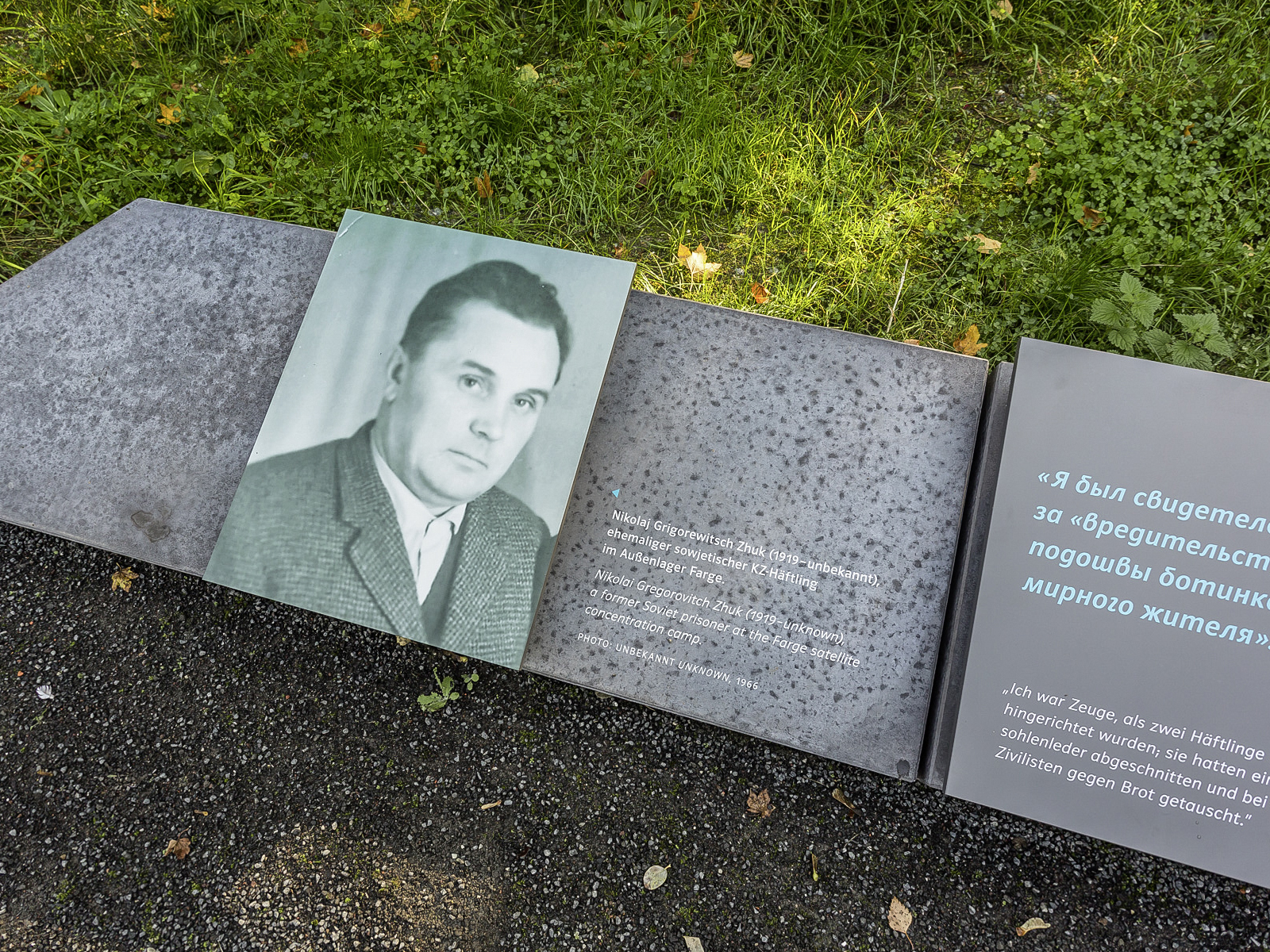
The educational concept of the exhibition organizers ofLandeszentrale für politische Bildung Bremen (regional centre for political education Bremen) focuses on an active discussion about the stories that are told at the bunker. It is intended to enable the visitors to form their own questions and answers in the approach to the place and the topic. As a starting point for discussion, historical photos are placed at each station. The design concept is based on the idea of opposing the fascination emanating from the bunker (regarding size and aura), and instead to treat the structure as an object of a museum exhibition. It is not about the bunker as a building, but about the history connected with it. In order to illustrate this separation, a clear contrast to the bunker was created by the careful selection of shape, material, and colour of the circular route’s elements.
The form language of the elements is derived from the image mark of the »Valentin« bunker. Right angles are largely omitted – the non-orthogonal forms stand in contrast to the box-shaped bunker. The signposts are made of dark grey, very fine concrete. The path is adapted to this colour. The information boards made of solid core panels are lacquered and directly printed. These materials stand out from the weathered concrete of the bunker. Blue-green and anthracite are the two colours of choice. The bright blue-green of the information boards clearly stands out from the environment. Information on orientation in the terrain are set in white on anthracite. A station consists, with exceptions, of an information pillar, an explanatory text in German and English, a main historical photo of the respective place, as well as additional photos and quotations.
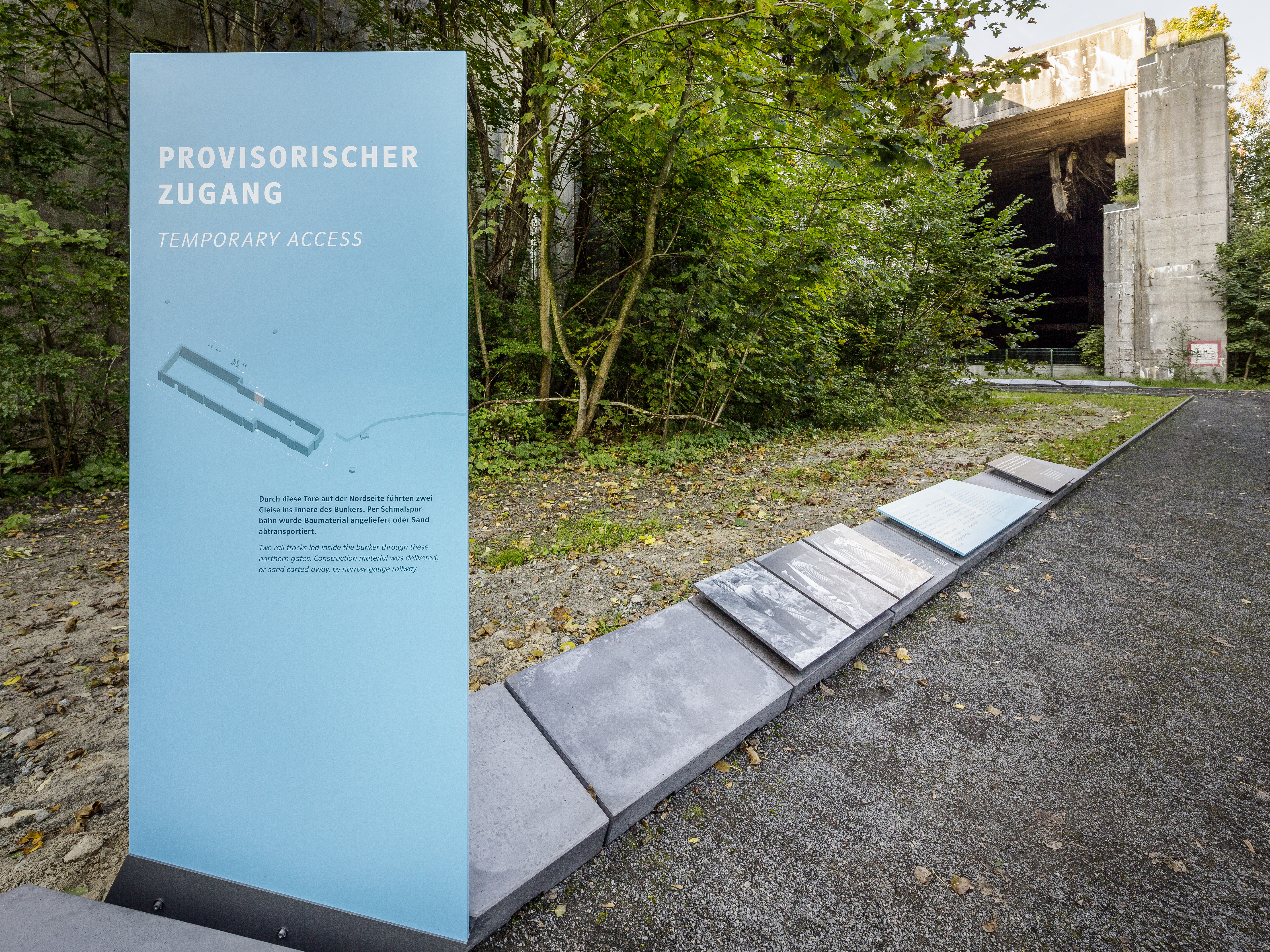
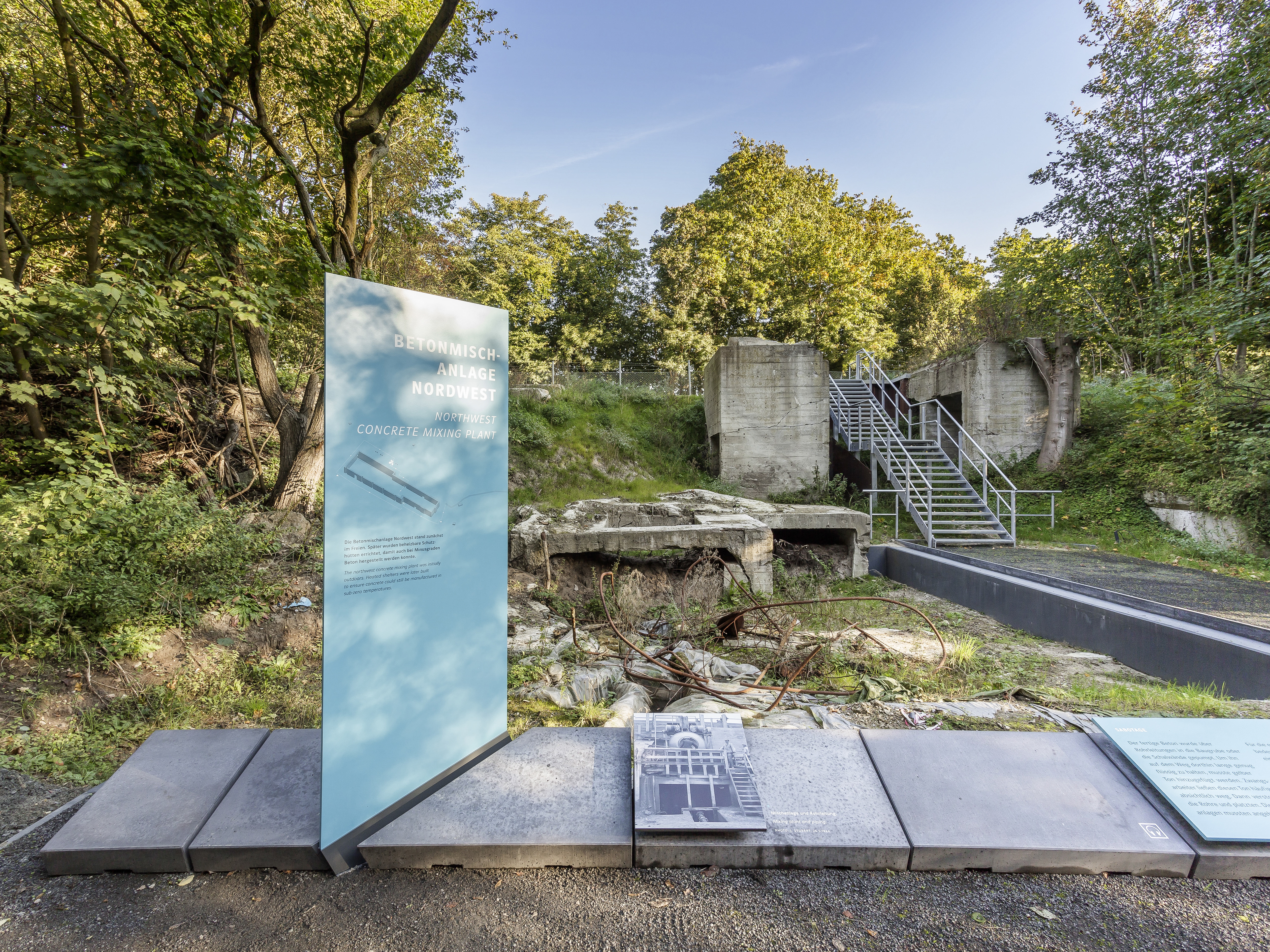
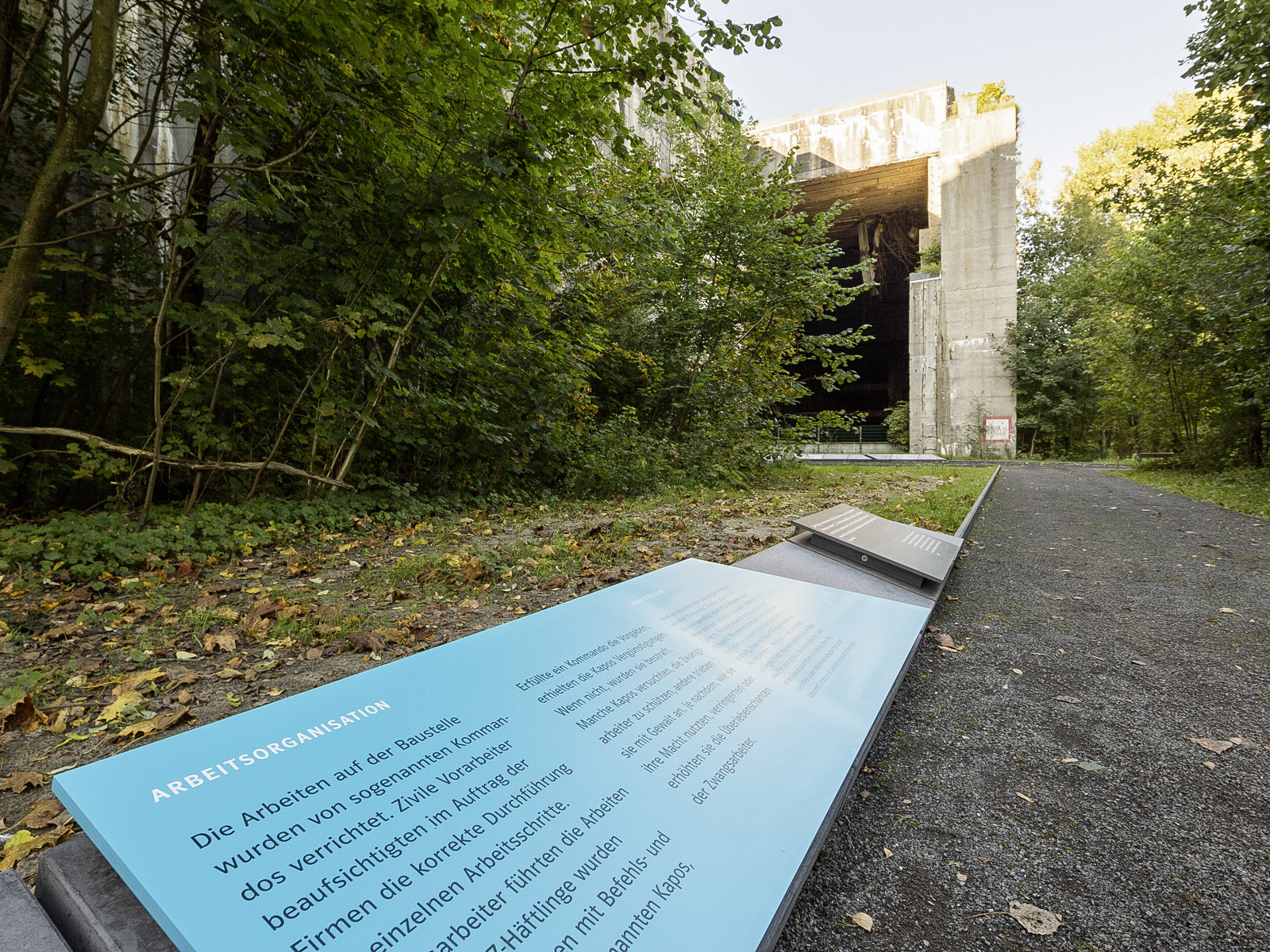
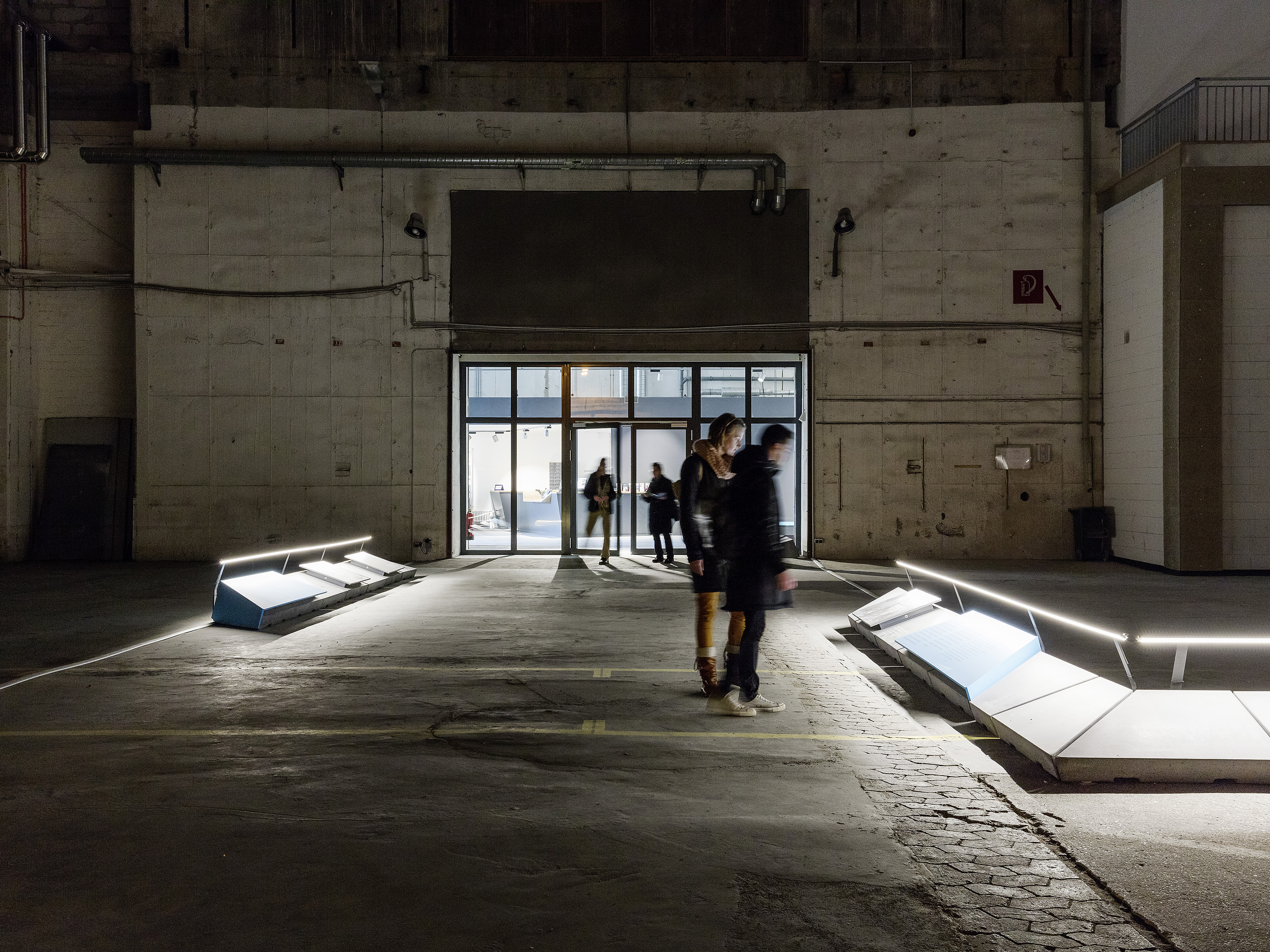
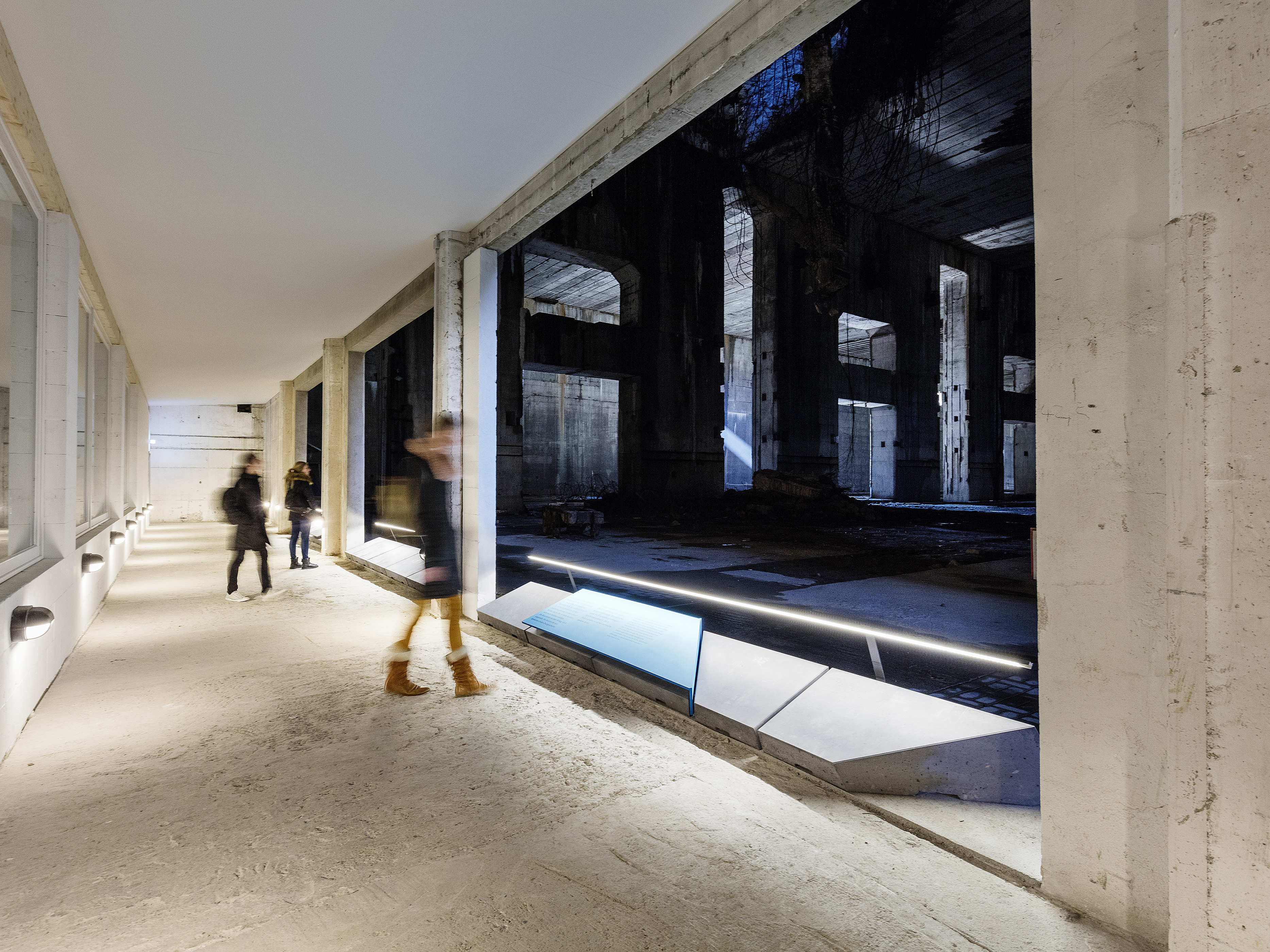
In addition to the circular route, the information centre of the bunker was also redesigned. An interactive media table and an exhibition provide further comprehensive insights. As a central exhibit, the media table puts bunker construction and armament area in a larger context. In 30 minutes, it shows the geographic and political development from the beginning of the 1930s until today. The exhibition is located in the former Bundeswehr car repair shop. The visitors are guided through seven chapters – the starting point is a historical object: a fence pile of the concentration camp marks the introduction of the theme complex of the various camps near the construction site, the typewriter of a survivor leads to the chapter »Weiterleben« (to live on).
The centrepiece of the exhibition space is a projection with names and photos of the hitherto known people, who were forced to work at the »Valentin« bunker and, in some cases, also left their lives here.
In close cooperation with Bremen design agency oblik, we accompanied the project – from conception and implementation to the opening in November 2015. The main focus of the work of both offices was the design of the circular route in the exterior and interior, the exhibition, and the foyer including the media table. The contents were curated by Dr. Marcus Meyer and Dr. Christel Trouvé from the regional centre for political education that was also the contracting authority of the project. The office protze+theiling was responsible for landscape and path planning. The office of Heinzelmann Architekten supervised the conversion of the former car workshop to an information centre. Jens Oertel Design, together with oblik, prepared the content and graphic representation of the media table.
